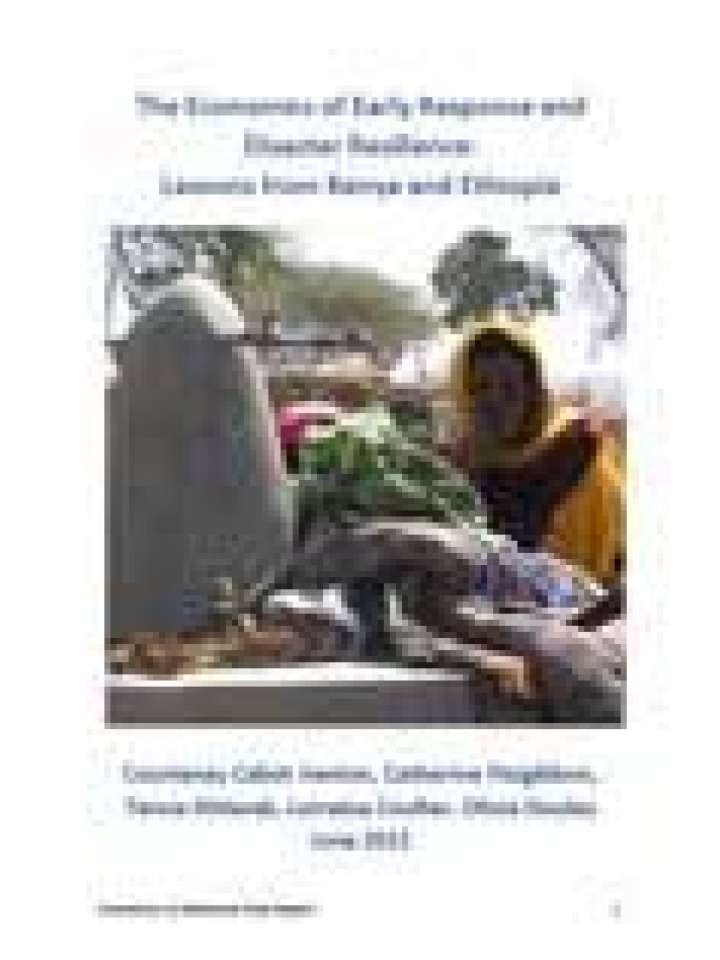The economics of early response and disaster resilience: lessons from Kenya and Ethiopia
This study uses Kenya and Ethiopia as case studies, comparing the relative costs of late humanitarian response, early response, and building resilience to disasters. The purpose of this work is to provide the first step towards: (I) A solid evidence base on the cost effectiveness of building resilience to disasters as compared with the cost of relief and early response. (II) Identify the types of interventions that can provide the highest 'Value for Money'; (III) Incentivise donors, partner governments, multilaterals and implementing agencies to invest in and work more on resilience to disasters.
The report is structured as follows:
Section 2 : provides a brief overview of the local context in each country – with specific reference to the history and impacts of drought, how this affects pastoralists, as well as types of measures that are being used to build resilience.
Section 3 : describes the analytical framework and methodology used to undertake the analysis, in particular defining key concepts for the analysis.
Section 4 : describes the findings from the Kenya analysis.Economics of Resilience Final Report 11
Section 5 : describes the findings from the Ethiopia analysis.
Section 6 : provides some initial evidence on the value for money of resilience interventions.
Section 7 : draws key conclusions and recommendations.
Explore further
